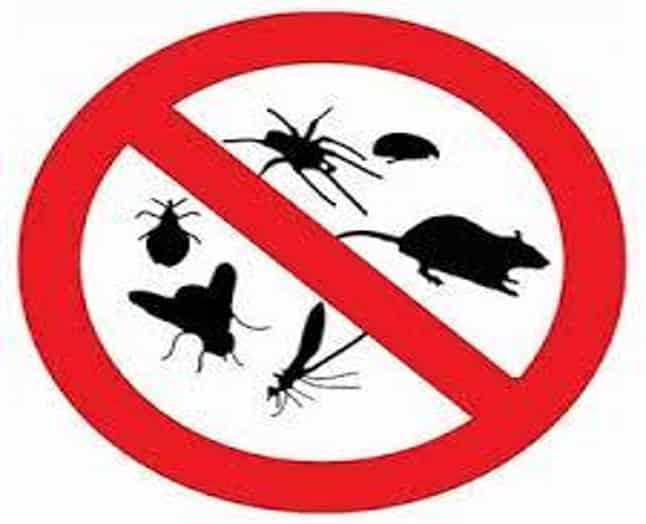Invasive species can disrupt on ecosystems and pose major challenges to pest control in our homes and commercial properties. As some introduced pests thrive in new environments, they often become challenging to manage and can cause destruction to assets and well-being. Understanding the specific invasive species to watch for, along with suitable management strategies, is important for ensuring your living space pest-free throughout the year.
In this document, we will explore the five most common invasive species that residential managers and property managers should be aware of. We will analyze their habits, the dangers they pose, and provide practical advice on how to stop and contain these pests. From common household nuisances to more grave threats, knowing how to spot these species and reacting appropriately can help safeguard your home and well-being.
Frequent Home Infestations
Home pests are a regular nuisance for property owners, and recognizing their behaviors is essential to successful management. Typical pests consist of fire ants, cockroaches, and bed bugs. Ant species are extremely cooperative insects that frequently invade homes in search of resources. They can quickly become a serious problem, especially when scouting trails lead to nests within structures or foundations. Cockroaches, on the other hand, prosper in shadowy, hot places, making them particularly challenging to remove once they create a presence. Bedbugs are notorious for their ability to conceal themselves in small gaps and crevices, feeding on human blood during the darkness, which can cause distress and worry for those impacted.
Proficient pest management commences with proper recognition to apply the right strategies. For case in point, dealing with ant infestations may involve blocking entry points and installing traps, while cockroach control needs extensive cleaning and possibly pesticide applications in infested zones. Bedbug eradication often calls for expert extermination due to their hardiness and fast reproduction speed. Homeowners should be vigilant about clues of problems, such as droppings, nests, or marks, and respond promptly to diminish issues.
Recognizing the usual habits and environments of these pests can greatly affect the efficacy of control efforts. Seasonal changes can also impact pest activity, with specific types becoming more prominent in the spring or the fall. Consistent maintenance, including evaluations and protective actions, can help limit the problem before it grows. By remaining proactive and knowledgeable, homeowners can create a clean environment year-round the calendar.
Efficient Bug Management Approaches
To effectively manage non-native species and domestic pests, a comprehensive approach is essential. Pest Control Service Queen Creek involves comprehending the distinct pests you are dealing with, including their habits and habitats. For example, ants may be drawn to edibles, while rodents seek refuge. Identification is the first step in developing your pest control plan. Once the pests are detected, you can determine the most effective methods of extermination, focusing on both quick action and ongoing mitigation.
In addition to conventional pesticides, consider incorporating eco-friendly pest control approaches that are secure for both your household and the environment. Utilizing essential oils, diatomaceous earth, and trapping solutions can successfully reduce pest populations without harmful chemicals. Furthermore, these methods often complement professional pest control offerings, ensuring that your home stays pest-free throughout the year. Remember that some pests, such as termites and cockroaches, require specialized treatment due to their resilience and the likelihood damage they can bring about.
Preventive measures play a key role in pest control methods. Regularly inspecting your home for signs of pest presence and ensuring cleanliness can considerably reduce the risk of pest problems. Seasonal care, such as closing cracks, safeguarding food storage, and controlling your landscape, is vital in keeping invasive species at a distance. By understanding how to defend your home based on the changing seasons, you can create a proactive approach that minimizes the likelihood of infestations. Establishing a system for professional inspections can also assist catch potential issues before they escalate, making sure your home remains a pest-free sanctuary.
Seasonal Pest Prevention Advice

As the seasons change, so do the kinds of pests that may enter your house. The spring season heralds a surge in bugs like ant colonies and mosquitoes. To get ready, make sure that your window frames and entryways are properly closed, and check for any openings that could draw in these pests. Regularly tidying your outdoor space and clearing rubbish can greatly reduce their breeding sites. Moreover, think about establishing a bug control strategy in early spring to anticipate potential invasions.
In summer, the warm weather can lead to an increase of multiple pests including wasp nests and flies. Maintain your cooking area clean by quickly cleaning up spills and storing food in airtight containers. Using outdoor pest management methods like lemon-scented candles can assist combat mosquito issues during outdoor gatherings. It's also wise to check your house’s exterior for any cracks or openings that could give pests easy entry to your living space.
As fall comes, rodents often look for refuge from the cold. Close any holes in your home's base or around pipes to prevent mice and vermin from entering your home. Store wood away from the house and make sure that your gutters are unclogged to prevent liquid accumulation, which can lure in pests. Routine checks and upkeep will assist keep your home pest-free through the chilly months, laying a solid foundation for continued pest management in winter.
